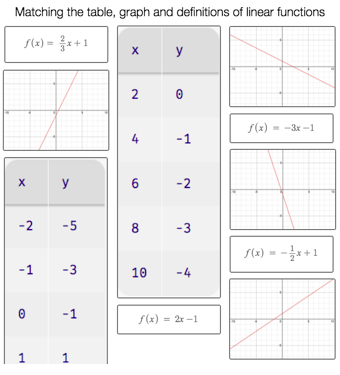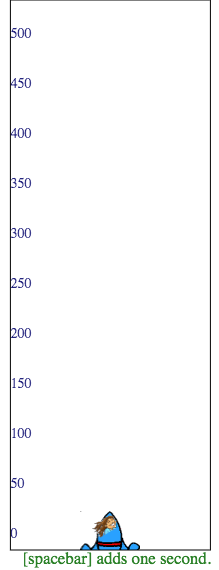Like IM Algebra™, Bootstrap is field-tested and research-validated, with a focus on deep exploration that supports and engages all kinds of learners. Our integrated computing modules have been proven to support math transfer and can be mixed and matched to supplement what you’re already doing in your classroom. Teaching High School math with Bootstrap also addresses many CS Standards, including: 1B-AP-10, 2-AP-1, 2-AP-10, 2-AP-11, 2-AP-12, 2-AP-13, 2-AP-14, 2-AP-17, 2-AP-19, 3B-AP-14, and 3B-AP-21.
| IM Unit |
Integrated Computing Lessons that can extend the IM Unit |
|
-
Simple code enables students to test solutions and non-solutions to inequalities.
-
The computer plots points provided by students on a numberline in either green or red, depending on if those points make the inequality true or false.
-
Students use what they know about inequalities to define the boundaries that will keep a video game character on screen.
-
Finally - a real-world application of inequalities that your students will care about!
-
This activity dovetails nicely into the culminating project of student video game design and creation - but our individual lessons are engaging and worthwhile whether you facilitate a final project or not.
|
|
-
Students solve a classic function word problem about the velocity and height of a rocket - and then write simple code to see the rocket blast off.
-
Discovering functions as an abstraction over an arithmetic pattern builds meaningful and lasting conceptual understanding.
-
Your students will enjoy modifying their code to change the speed and direction of the rocket - further developing their understanding of the distance / velocity relationship.
-
Students learn how to define a function so that it behaves differently depending on the input, beginning with a program that generates a variety of different red shapes.
-
Video games rely on piecewise functions for player animation! The video game project offers an exciting opportunity to apply new and otherwise abstract mathematical knowledge.
-
Apply new and otherwise abstract mathematical knowledge in a relevant context, and awe your students with a real-world application they will care about.
|
|
-
Simple code allows students to quickly generate scatterplots from any dataset, allowing for lively discussion about trends observed.
-
Our datasets are designed to spark interest, foster deep thinking, and ultimately lead students to a nuanced understanding of data science concepts.
-
Your students will search out correlations in a dataset, discussing and analyzing the form, direction, and strength of the linear relationships they see in the scatterplots they generate.
-
Students will repeat this process in a dataset of their choice, one that sparks their interest. Simple code enables students to use linear regression to quantify patterns in their dataset.
-
Our data science curriculum leverages students' curiosity about the world around them to inspire real data analysis and original research. Individual lessons are impactful regardless of whether you opt to facilitate the culminating research project or not.
|
 Bootstrap by the Bootstrap Community is licensed under a Creative Commons 4.0 Unported License. This license does not grant permission to run training or professional development. Offering training or professional development with materials substantially derived from Bootstrap must be approved in writing by a Bootstrap Director. Permissions beyond the scope of this license, such as to run training, may be available by contacting contact@BootstrapWorld.org.
Bootstrap by the Bootstrap Community is licensed under a Creative Commons 4.0 Unported License. This license does not grant permission to run training or professional development. Offering training or professional development with materials substantially derived from Bootstrap must be approved in writing by a Bootstrap Director. Permissions beyond the scope of this license, such as to run training, may be available by contacting contact@BootstrapWorld.org.



